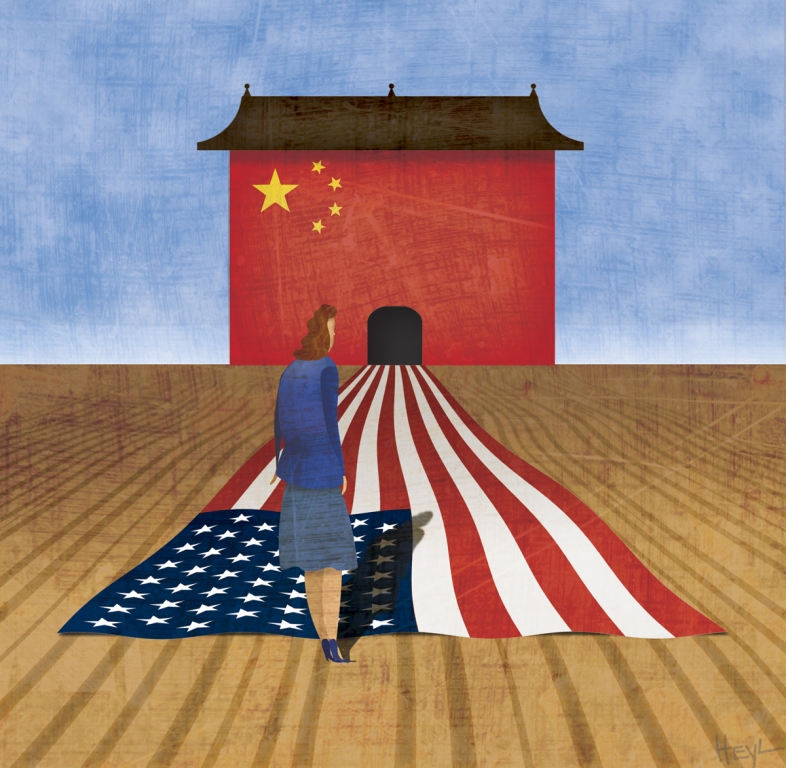This spring, Disney opened its first store in the People’s Republic of China, a 54,000-square-foot flagship in Shanghai, and the company’s largest retail location in the world.
The line that formed, three hours before doors opened, was more than a mile long. After an hour, newcomers were stopped from joining the line. Inside the store, merchandise dwindled.
Every Western retailer knows the streets of Beijing and Shanghai are paved with gold. Seoul and Tokyo are booming, too.
“I can’t think of a major Asian city where there isn’t consumer demand for American retailing,” says Randall Stone, managing partner at Lippincott (New York).
But the streets have their share of potholes. One of the most spectacular failures was Best Buy, which closed all nine of its stores in China in 2011, after only five years in the market.
It was said to have made many mistakes, from its prices (too high) to its stores (too big) to its locations (too congested) – a complete misread of the Chinese market.
Advertisement
“For global big-box retailers, China appears to be easy territory to conquer,” the China Research Center wrote in its newsletter, China Currents. “However, the retail industry in China has proved more complex than expected. Foreign retailers face various challenges, from distinctive local consumer cultures to different industry practices in terms of the business model, marketing and sales practices and supplier relationships.”
Best Buy’s biggest mistake seems to have been lack of guidance, especially from those who’ve been there and survived the crucible.
“There’s always a lot to be learned from U.S.-based retailers who fail overseas,” says David Hogrefe, global accounts director of Fitch (Columbus, Ohio), which has offices around the world. “Either they didn’t do their research or the research was flawed.”
Hogrefe’s firm works with Procter & Gamble (Cincinnati) in Asia. Lippincott, which has worked in Asia with Nissan/Infinity and Samsung, is currently helping Estée Lauder launch brick-and-mortar stores there.
Linda Krueger, now head of Krueger Retail Design in Indianapolis, spent five years in Hong Kong as vp, global retail design, for DFS Group Ltd., a luxury travel retailer. She’s been using her experience to help U.S. brands and design firms learn about the Far East.
“Living in China meant knowing how they lived, how they shopped, what they bought, the brands they liked,” she says.
Advertisement
Fitch, which maintains studios in Beijing and Singapore to cover the East Asian retail market, sharpens its worldwide expertise with its Globetrotter program, circulating designers and strategists among its six overseas offices (which also include Dubai, U.A.E; Mumbai and Delhi, India; and London).
“Our people return with a range of global perspectives and knowledge of various marketplaces,” Hogrefe says. “Our clients like working with people who have a deep understanding of the marketplace and the local heritage. Knowing the language and having local agency and implementation partner relationships is valuable, too.”
What about dealing with the world’s largest capitalist economy in the world’s largest Communist country?
In Shanghai, Stone says, Xintiandi, a revitalized part of the old city, has become a trendy retail and entertainment district. Tucked into one of the buildings, surrounded by young Chinese spending money and having fun, is a little museum marking “The Birthplace of Chinese Communism.”
Avoiding the Potholes
The opportunities are great, but here are only a few of the many basics of doing business successfully in Asia.
Advertisement
Asia is not a monolith. “There are huge variations between Asian countries,” says Randall Stone of Lippincott. “Remember, ‘Asia’ also includes the Southeastern countries of Vietnam, Thailand, Malaysia and Singapore, as well as India and Pakistan, and each country has its own sets of strengths, weaknesses, opportunities, challenges.”
Understand the East Asian relationships. Initially, the Chinese were not interested in what Korea had to offer, says store designer Linda Krueger, but things have turned around in the past few years. Korea’s vibrancy and influence has really taken off,” she says. “The Chinese especially consider Korean women to be quite beautiful and look to Korea for beauty and skin care.”
Both Chinese and Japanese millennials are attracted to Korea’s fashion sense, largely due to the growth of Korean pop music and TV soap operas.
U.S. rules don’t always apply. Best Buy applied many of its successful American strategies to the Chinese marketplace. But its own-brand stores never succeeded in wooing the Chinese customer, who prefers shopping for information and prices online and didn’t value Best Buy’s vaunted in-store service.
The retailer also made a critical mistake on home appliances. Washers and dryers sat side by side, though many Chinese consumers consider dryers harmful to clothing and don’t use them.
Talk the right talk. China has several regional dialects. Mandarin is the primary dialect in Beijing. And those who speak Mandarin often don’t understand Cantonese, from southern China. Hong Kong is one of the few northern districts that held onto Cantonese. And in Shanghai, where the predominant dialect is Wu, young hipsters have developed their own urban dialect, called Shanghainese.
Be on the ground. Brainstorm from the U.S., but know what the local rules and codes are where you’re building. “Major retailers all have regional offices with project managers on-site who understand what needs to happen and what accommodations have to be made,” says Stone. “It could be as simple as a local plumbing requirement that mandates one bathroom where your plans had two.”


 Photo Gallery1 week ago
Photo Gallery1 week ago
 Headlines1 week ago
Headlines1 week ago
 Headlines2 days ago
Headlines2 days ago
 Headlines1 week ago
Headlines1 week ago
 Headlines1 week ago
Headlines1 week ago
 Designer Dozen2 weeks ago
Designer Dozen2 weeks ago
 Designer Dozen6 days ago
Designer Dozen6 days ago
 Headlines1 week ago
Headlines1 week ago















